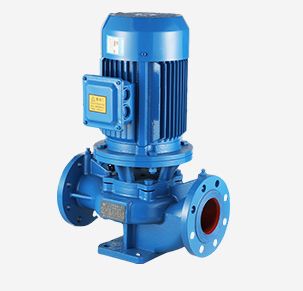TEL:
+86 13120555503
Turkish
- Afrikaans
- Albanian
- Amharic
- Arabic
- Armenian
- Azerbaijani
- Basque
- Belarusian
- Bengali
- Bosnian
- Bulgarian
- Catalan
- Cebuano
- Corsican
- Croatian
- Czech
- Danish
- Dutch
- English
- Esperanto
- Estonian
- Finnish
- French
- Frisian
- Galician
- Georgian
- German
- Greek
- Gujarati
- Haitian Creole
- hausa
- hawaiian
- Hebrew
- Hindi
- Miao
- Hungarian
- Icelandic
- igbo
- Indonesian
- irish
- Italian
- Japanese
- Javanese
- Kannada
- kazakh
- Khmer
- Rwandese
- Korean
- Kurdish
- Kyrgyz
- Lao
- Latin
- Latvian
- Lithuanian
- Luxembourgish
- Macedonian
- Malgashi
- Malay
- Malayalam
- Maltese
- Maori
- Marathi
- Mongolian
- Myanmar
- Nepali
- Norwegian
- Norwegian
- Occitan
- Pashto
- Persian
- Polish
- Portuguese
- Punjabi
- Romanian
- Russian
- Samoan
- Scottish Gaelic
- Serbian
- Sesotho
- Shona
- Sindhi
- Sinhala
- Slovak
- Slovenian
- Somali
- Spanish
- Sundanese
- Swahili
- Swedish
- Tagalog
- Tajik
- Tamil
- Tatar
- Telugu
- Thai
- Turkish
- Turkmen
- Ukrainian
- Urdu
- Uighur
- Uzbek
- Vietnamese
- Welsh
- Bantu
- Yiddish
- Yoruba
- Zulu
Telephone: +86 13120555503
Email: frank@cypump.com
Şub . 17, 2025 14:58 Back to list
Septic Tank Pumps
In the ever-evolving landscape of wastewater management, the septic effluent pump stands out as a quintessential component for maintaining an effective septic system. For any homeowner or facility manager, understanding the intricacies of septic effluent pumps isn't just beneficial—it's essential.
Equipping oneself with knowledge about common pitfalls and maintenance practices can significantly enhance the lifespan of a septic effluent pump. Regular inspections are key—checking for blockages or leaks, assessing power supply stability, and maintaining the integrity of the pump's impellers and seals are necessary steps for sustained functionality. Users are advised to have a routine of preventive maintenance, which includes cleaning out any accumulated debris and ensuring the system's float switches—the components that activate the pump when the tank reaches a certain level—are working flawlessly. The evolving technology in the realm of septic effluent pumps also demands attention. With the integration of smart technology in modern pumps, monitoring systems now offer real-time alerts and analytics, providing property managers the ability to track performance metrics remotely. This seamless integration not only enhances efficiency but also significantly reduces the potential for overflow incidents, protecting both property and environment. Ultimately, choosing a septic effluent pump comes down to understanding one's specific needs and environmental conditions. Consulting with professionals can provide insights that marry the technical aspects with real-world application, ensuring the chosen pump aligns perfectly with the intended use. As a testament to technological advancements, modern septic effluent pumps blend sophisticated engineering with ease of use, thus reinforcing their place as fundamental elements in environmental management. For those responsible for maintenance and management, investing time into understanding these devices is akin to safeguarding one of your property's most vital components, ensuring efficiency, reliability, and sustainability for years to come.


Equipping oneself with knowledge about common pitfalls and maintenance practices can significantly enhance the lifespan of a septic effluent pump. Regular inspections are key—checking for blockages or leaks, assessing power supply stability, and maintaining the integrity of the pump's impellers and seals are necessary steps for sustained functionality. Users are advised to have a routine of preventive maintenance, which includes cleaning out any accumulated debris and ensuring the system's float switches—the components that activate the pump when the tank reaches a certain level—are working flawlessly. The evolving technology in the realm of septic effluent pumps also demands attention. With the integration of smart technology in modern pumps, monitoring systems now offer real-time alerts and analytics, providing property managers the ability to track performance metrics remotely. This seamless integration not only enhances efficiency but also significantly reduces the potential for overflow incidents, protecting both property and environment. Ultimately, choosing a septic effluent pump comes down to understanding one's specific needs and environmental conditions. Consulting with professionals can provide insights that marry the technical aspects with real-world application, ensuring the chosen pump aligns perfectly with the intended use. As a testament to technological advancements, modern septic effluent pumps blend sophisticated engineering with ease of use, thus reinforcing their place as fundamental elements in environmental management. For those responsible for maintenance and management, investing time into understanding these devices is akin to safeguarding one of your property's most vital components, ensuring efficiency, reliability, and sustainability for years to come.
Share
Latest news
-
ISG Series Vertical Pipeline Pump - Industrial Fluid Handling | Chi Yuan Pumps
NewsAug.05,2025
-
ISG Series Vertical Pipeline Pump - Chi Yuan Pumps Co., Ltd.|Compact Design&Energy Efficiency
NewsAug.05,2025
-
ISG Series Pipe Pump - Chi Yuan Pumps | High Efficiency, Low Noise
NewsAug.05,2025
-
AI-Optimized Pipeline Pumps | Boost Efficiency
NewsAug.05,2025
-
Reliable Non-Clog Sewage Pumps with GPT-4-Turbo Tech
NewsAug.04,2025
-
High-Performance Air Pumps for Sand & Gravel | Efficient Transport
NewsAug.03,2025










